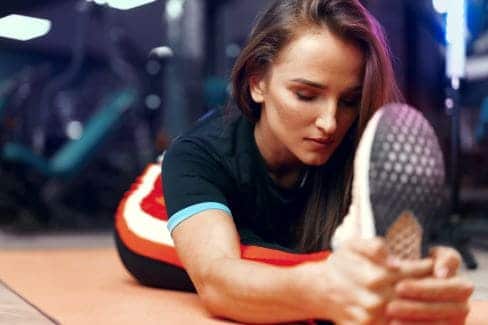
“Stretch it out” has to be the most common advice I hear. Back hurts? Stretch it. Hips? Stretch it. Neck? Achilles? Stretch it!
Is stretching always the answer for tightness or pain? Even though the dance world has been notorious for the “more is better” method with stretching, we’re finding more and more evidence against excessive stretching and leaning our work towards strengthening.
Let’s get one thing straight before we begin, mobility and flexibility are two different things.
Mobility is the range of motion you can take a joint with control. (ie a develope a la second)
Flexibility is the range you can achieve passively. (ie a split)
Knowing that, what movement in dance is passive…?
The answer is in the definition of “dance” “to move rhythmically”. Movement is not passive. Dance is not passive. Your training should not be passive.
Typically, true mobility of the body goes hand in hand with your ability to control the ranges of motion you’re putting it through.
Flexibility (motion without active control) in my opinion, is like a house of cards. It’s great when it is not subjected to any force, but once the wind blows, the cards fall and we are back to the same old daily grind of stretching for more motion.
A better idea is to allow the body to encounter these challenges as it attains new motion in the joints and muscles. Using strength training to do this does both. It allows the body to explore new ranges of motion AND get load through the body at the same time (ie the wind).
One study from the National Institute of Dance Medicine and Science (NIDMS) has shown that a year of strength training cuts dancers’ injury frequency by 59 per cent.
The Australian Ballet head Physiotherapist recently shared their results in eliminating passive stretching of the calf and replacing it with strengthening exercises only. She explains the ballet company has worked to reeducate their thinking as “optimising your capacity, strength, and power at those end ranges”
I can’t think of a more perfect way to describe how I want my dancing and my students to look.
I highly recommend you read the full article about their success and how they applied the work
https://dancemagazine.com.au/2019/09/why-the-australian-ballet-dancers-quit-stretching/
Dance is one, if not the only, high level sport that does not cross train. Dancers have been taught to fear doing anything except dance. This has created a world of dancers that do not actually train for what they need their body to do. Move with power through space.
Ballet companies like The Australian Ballet and The Royal Ballet are starting to utilize strength training over flexibility work with huge success in injury reduction and increase ethstetic in performance.
So, what are some examples of ways to strengthen and work on active stretches for long term mobility?
To stretch the adductor muscles, try a deep goblet squat.
Hamstring stretch? Hip hinging is the best!
What about the hip flexors? Lunging the action, not lunging the passive stretch.
So, why is strength training so superior to stretching for ballet? Because motion requires a stable point to move from. It’s physics!
If I push a car (in park), the car won’t move but I will.
If the car is less stable (not in park) then it will move, yet I won’t.
The more stability you can make segments of your body do, (ie standing leg) the better your moving parts can move in extreme directions (ie working leg). This applies strongly for the torso strength. Torso must have some stiffness (in a good, stable way) so the arms and legs can move in the ball and sockets the way they are supposed to.
I would not consider what I talked about even the “tip of the iceberg”. There are so many exciting results waiting as you shift your training.
Now, just as you did not learn correct dance technique on your own, you must learn strengthening techniques, especially with weights, from a professional.
Taking advantage of the resources on Doctors For Dancers, you can find trainers and movement practitioners to take you where you want to go.
If you are looking for a strength program to learn correct form, and how it applies to dance, I recommend checking out my new monthly strength program (coming in March) at www.alignfitnessbyallie.com on Instagram at @alignfitnessbyallie or my bio here on Doctors For Dancers.
About Allie Christensen
At Align Fitness By Allie, we specialize in training dancers of all levels in correct movement patterns and technique, strength and conditioning, flexibility, injury recovery, and more. Using the Gyrotonic Method and others to teach correct placement, alignment, dance technique, I deal with dancers both in pain and not.
Allie trained as a classical ballet dancer, danced professionally, and suffered a career-ending injury that drove her to help other dancers and assist to make their careers last longer.
Instagram: @alliefitnessbyallie
Website: http://www.alignfitnessbyallie.com
Email: allie@alignfitnessbyallie.com
